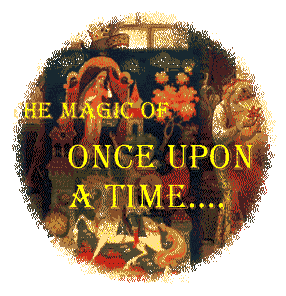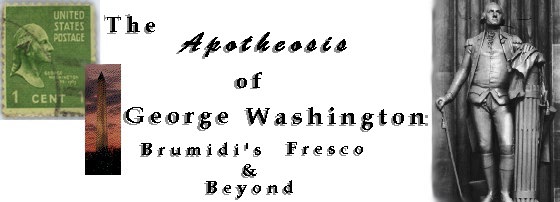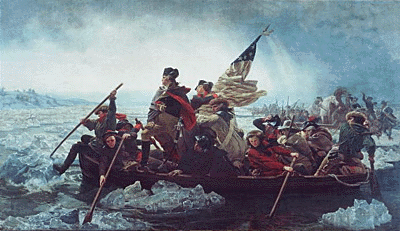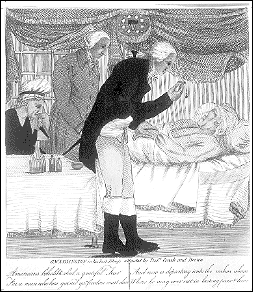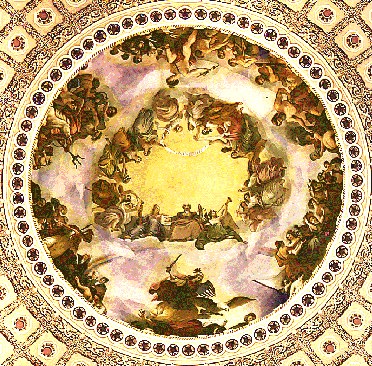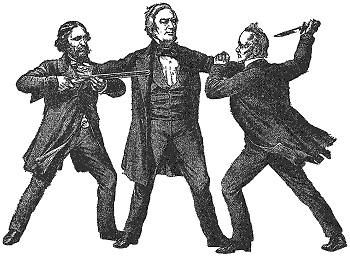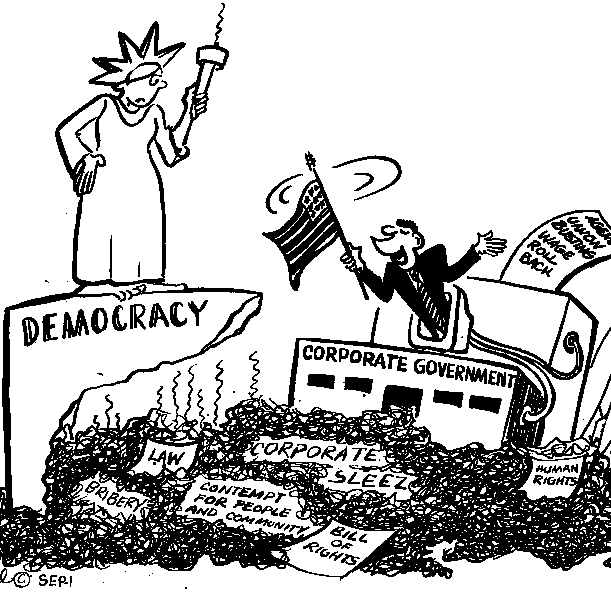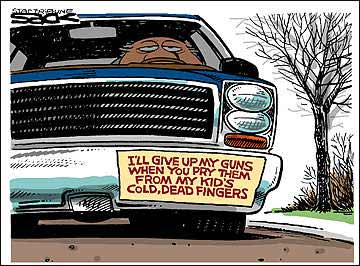|
Narrative Logo - Click for Main Menu IX. The Politics of Storytelling
Paul Revere's Color Print of the Boston Massacre Now that we have a plethora of media sources, we tend to forget that in the past, electronic media did not exist, and print media was often scarce and therefore precious. In the time of events such as the American Revolutionary War, although there were newspapers, much of the population could not or did not have subscriptions. Current news was often circulated on "broadsides" - little papers what were printed for a specific issue or event, but even these had limited circulation. Thus, much of the news that the majority of the people had was "folk" news, in a sense. And, much of that has, not surprisingly, come to represent what many people have as their "stored" knowledge about real historical events. The "Boston Tea Party" is one - and we forget that at the time, it was primarily a tax revolt. And, the "Boston Massacre," for example, a snowball fight that got out of hand, tends to be more folklore than history. Twenty-one days before -- on the night of March 5,
1770 -- five men had been shot to death in Sign for Apotheosis of George Washington Let us begin with the earliest Presidential folklore. George Washington, the Father of our Country (seems like a long time since I have heard that!) - was our first President. The most popular legend about him might have been the story of the Cherry Tree. According to this story, George was given a little ax as a present. He promptly, or soon thereafter, went out in the orchard and cut down a tree to test the ax. His father, having discovered that his favorite cherry tree was destroyed, came to find the culprit. George, when questioned, told the truth: "It was I, dear father, who cut down the cherry tree." While this seems to be a very simple and inoffensive story, it had a central and unequivocal moral: honesty is the best policy. Little George was, in many versions, punished for his Cherry Tree indiscretion. We are told that he suffered the penalty with dignity and equanimity. Both the confession and the acceptance of punishment represented important values for the new Republic of States. First, there is the admission to the real "father" that one has cut the tree. This fits well with other legends that we hear from the Revolutionary period. A strong value in revolutionary politics is the willingness to stand up to authority and tell the truth; it is equally important, in the context of a free society, to accept the punishment of law. However, search as I might, I could find no re-telling of the tale of the cherry tree. Some strange facts, though. George Washington's father died when he was only 10 (so if the cherry tree story is true, he must have been precocious, indeed!)-- Although Washington is known as "The Father of Our Country"-- he and the widow Custis, Martha Washington, that is, had no children of their own. And a couple of sites that debunked the cherry tree episode. . . . from The Surprising George Washington About those teeth . . . According to John Adams, Washington lost his teeth as the result of cracking Brazil nuts between his jaws. By the time he became President, he had but a single tooth left and a set of dentures fashioned from cow's teeth. In hopes of finding something better, Washington contacted a leading dentist in Philadelphia, who produced a state-of-the-art set carved, not from wood, but from hippopotamus tusk. The new dentures were thoughtfully drilled with a hole to fit over his one remaining tooth. Unfortunately, they also rubbed against this natural tooth, causing more or less constant pain for which the President took laudanum. So much for the wooden teeth. What about other
Washington Other moments in Washington's life have legendary quality. The Crossing of the Delaware has all the attributes of the Green Knight in winter, the bold move, the bitter cold.
George Washington crossing the Delaware River (New Jersey) Washington's death was also the subject of lively folk interest for years afterward.
Sketch of The Death of George Washington I had always heard that his death was caused by a "barber" who practiced the then-common recourse of blood-letting to cure infection. But another strange account is also given: "His contemporaries were less willing to let him
go. On the last But after his death, the attempt to create the same kind of popular folk hero as was admired in Europe began, as well. this information is from the website, The Apotheosis of Washington.
Ceiling painting of Washington in Heaven with the Angels This image of Washington, painted in 1865,
reflects a vision of Washington that appealed to the American public just after his death.
The "apotheosis" served as a powerful symbol of the moralization of the
country's hero. Paintings and sculptures of Washington's celestial rise were soon to be
found in living rooms and civic halls across the country. The religious connotation was
clear: here was a man so virtuous and beloved that he surely had ascended to heaven,
escorted honorably by classical personifications of freedom and liberty. In effect, the
public's civic worship of Washington led to a nearly religious worship just after his
death. Washington was suddenly deified.
A referee separating two political rivals Tippecanoe and Tyler too. One of the first presidential elections to have "spin" was the campaign of Harrison and Tyler in 1840. Harrison, actually born at the Virginia "Berkeley" plantation and so of course a Virginia patrician, took as his campaign image the log cabin and jug of hard cider. Thus, he successfully linked himself to the "people." The campaign slogan was Tippecanoe and Tyler, too. Tippecanoe was originally the site of an Indian uprising. Many Indian tribes roamed this part of the Wabash
Valley before the thriving trading post of "
Keth-tip-pe-can-nunk " was established in the eighteenth century. Known to many as
" Tippecanoe", the village thrived until 1791, when it was razed in an attempt
to scatter the Indians and open the land to the new white settlers. In the late summer of 1811, the governor of the Indiana territory, Gen. William Henry Harrison, organized a small army of 1,000 men, hoping to drive the Indians from the town while Tecumseh was on a southern recruitment drive. from The Tippecanoe
Web Site [no longer available] also, here is a great site on North American Indian languages and groups: http://www.native-languages.org/languages.htm From the Atlas of North American Indians by Carl Walden: HARRISON:
The
governor of indiana territory had tricked a group of nonrepresentative chiefs through the
use of alcohol and deceit, into signing away three million acres for seven thousand and a
small annuity{the treaty of fort wayne in 1809} Also in 1811 harrison demanded that the
shawnees in prophetstown turn over some potawatomis the The great "Tippecanoe"
canvass, with its log cabins and hard cider, its enormous processions, its boundless
a couple of modern cartoons that enshrine American Legends....
Political Cartoon of Democracy undone by Corporate Pollution
"I'll give up my guns when you pry them from my kid's cold, dead fingers." - Political Cartoon |
